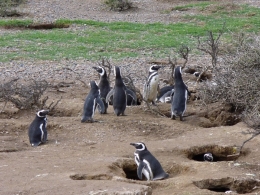A new study to improve seabird conservation in Patagonian ecosystems
Preserving a 300,000 square km area in Patagonian waters could improve the conservation of 20 % of the population of sea birds in their natural habitat, according to a study published in the journal Conservation Biology and led by the expert Francisco Ramírez, researcher from the Faculty of Biology and the Biodiversity Research Institute of the University of Barcelona (IRBio). The new study, which shows a multidisciplinary approach to define marine areas of interest in conservation, is also signed by Isabel Afán, Joan Giménez and Manuela G. Forero, from the Doñana Biological Station (EBD-CSIC).
One of the marine ecosystems with more biodiversity worldwide
Only 3 % of the ocean surface is protected, which is a lower level to the one in terrestrial ecosystems. Marine ecosystems in the Argentinian Patagonia are one of the areas with a larger biodiversity and highest biological production worldwide. Despite their ecological value, they are now one of the most threatened marine areas by the impact of human activity –intense fishing activity- and changes related to global warming.
At the moment, seabirds are the most threatened bird group worldwide. As part of this research, experts studied the populations of fourteen species of seabirds distributed over 3,000 kilometres in the Patagonian coast. Among the most threatened seabirds are the Olrog’s Gull (Larus atlanticus), the red-legged cormorant (Phalacrocorax gaimardi) and the Magellanic penguin (Spheniscus magellanicus), according to the recent reports by the International Union for Conservation of Nature (IUCN).
Further information
